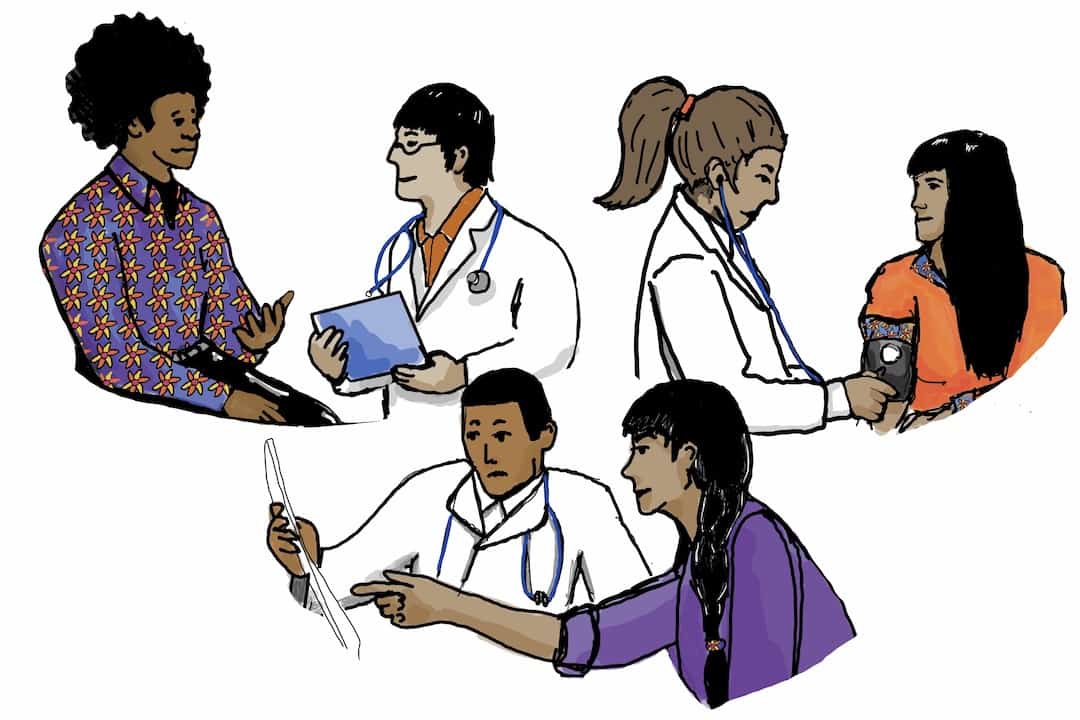Over the past six months, the public health response to the COVID-19 pandemic in Canada has made persistent equity concerns paramount. Special attention has been directed toward individuals who are immunocompromised and aging, as well as those with underlying medical conditions. A recent Nature article reveals that being an older man increases risks associated with COVID-19, with individuals aged 75 or older having an 11.6 per cent risk of mortality.
Now, a U of T-authored paper published in The Gerontologist suggests that race and Indigeneity may also place individuals at higher risk of COVID-19, as these two factors are correlated with chronic health conditions such as asthma and diabetes.
Racialized communities see chronic health conditions
Shen Lin, a PhD student at the University of Toronto’s Factor-Inwentash Faculty of Social Work and Institute for Life Course and Aging, is the author of the paper. He investigated the intersectionality of race and class, and how they contribute to health disparities across Canada.
The findings highlight an evident health disparity between members of varying racialized communities, socioeconomic backgrounds, and levels of education.
The probability of encountering medical conditions was highest in populations of Black immigrants and Indigenous peoples in Canada, followed by South Asian immigrants. The most prevalent conditions that these communities were at high risk of were obesity, hypertension, and diabetes.
Indigenous peoples in Canada were 1.96 times more likely to experience three or more underlying conditions in comparison to Canadian-born white individuals.
Racial inequalities present themselves in real, measurable health conditions. Previous studies correlate decreased health outcomes, lower access to health care, and poorer quality of care with those exposed to racism. This motivates further investigation into the manifestation of inadequate care for marginalized communities.
The Gerontologist study used over 29,700 sample sets from the Canadian Longitudinal Study on Aging. Lin investigated how racial-nativity status, family income, education, and “the intersecting profile of these three social positionings” affected the frequency of multimorbidities associated with COVID-19 mortality, such as diabetes and asthma.
In his paper, Lin wrote that “the intersectionality lens of race, immigration and old age has been largely overlooked” in existing literature.
Income as a secondary factor
In addition to minoritized status, the study found that income plays a significant role in one’s lifelong health. Individuals with an annual familial income below $20,000 annually were almost four times as likely to have three or more multi-morbidities than those with an income excess of $150,000.
Individuals who are earning less than $20,000 have a 74.8 per cent chance of experiencing one or two medical conditions that are considered risk factors for COVID-19. The same statistic drops to 54.8 per cent when incomes exceed $150,000.
In his paper, Lin suggests that being from a low-income background may affect one’s health while addressing that racialized individuals are overrepresented within these groups.
The two factors of income and minoritized status are not independent. Lin also discovered that South Asian and Black immigrants were overrepresented among low-income individuals, compounding their likelihood of chronic health conditions.
“With COVID-19 spreading globally, health equity should be placed at the center of all policy responses designed to mitigate the disproportionate impact of the pandemic on underserved aging communities,” wrote Lin.
This is in line with the official stance from Public Health Ontario, which clearly recognizes the increased COVID-19 risks for minoritized and low-income individuals. Recently, the US state of California announced plans for a statewide “health equity” metric to measure the pandemic response. As the Toronto Star reports, there have been calls for Canadian public health agencies to adopt the same strategy.


